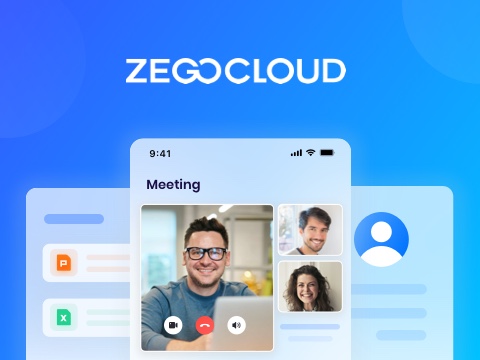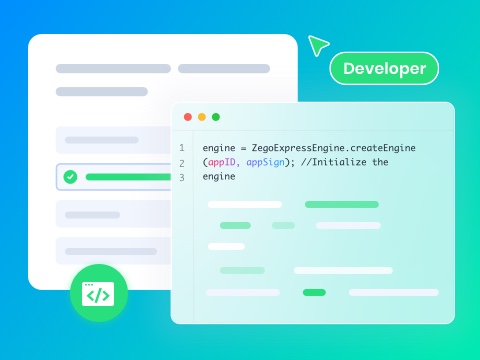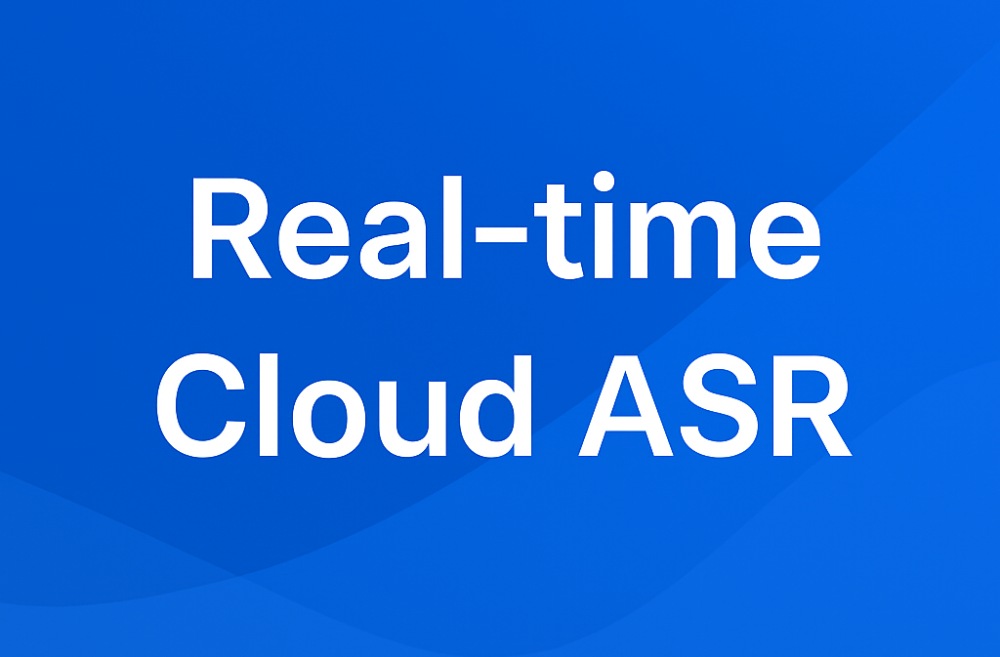Today’s world of online collaboration and live interaction makes Cloud Automatic Speech Recognition (ASR) essential, not optional. Online meetings need instant subtitles to break language barriers. Voice chat rooms rely on accurate recognition to keep conversations smooth. Live broadcasts use intelligent interaction to keep audiences engaged.
ZEGOCLOUD’s new Cloud-based Real-time Speech Recognition service is built for exactly these scenarios. It has been optimized from the core technology to practical use cases, making real-time voice processing faster, more accurate, and more cost-effective.
What is Real-time Cloud ASR?
Real-time Cloud Automatic Speech Recognition (ASR) is a cloud-based service that converts speech into text with ultra-low latency and high accuracy. It enables real-time interactions in meetings, chat rooms, and live broadcasts. ZEGOCLOUD’s Real-time Cloud ASR builds on this foundation by extracting capabilities from its Conversational AI product and delivering a lighter, scenario-oriented service.
Key Features of Real-time Cloud ASR
ZEGOCLOUD Real-time Cloud ASR combines ultra-low latency, high accuracy, and cost efficiency with flexible integration, delivering a reliable solution for real-time voice-to-text across multiple scenarios.
1. Ultra-low Latency
Get ASR results in as little as 600ms, including RTC transmission and ASR processing. Subtitles in online meetings and live broadcasts appear almost instantly, ensuring conversations remain smooth and synchronized.
2. High Accuracy in Noisy Environments
With AI-powered noise reduction, VAD, and echo cancellation, ZEGOCLOUD improves recognition accuracy by over 40% compared to traditional solutions. It captures clear speech even with background music, overlapping voices, or crowd noise.
3. Cost Efficiency with On-Demand Recognition
Unlike traditional solutions that process all microphones simultaneously, ZEGOCLOUD activates recognition only when users speak. This reduces wasted processing and cuts costs by up to 80% in voice chat rooms.
4. Flexible Integration
Seamlessly integrates with RTC audio streams through the Express SDK. The system supports multiple third-party ASR providers, allowing you to choose the model best suited for your region, scenario, and budget.
5. Scalable for Any Business Size
Comes with 20 free concurrent channels by default. Additional capacity can be purchased on demand, ensuring your system scales smoothly without unnecessary overhead.
6. Wide Application Coverage
Optimized for online meetings, cross-lingual live broadcasts, interactive voice chat rooms, and language learning. Each scenario benefits from ultra-low latency, accurate recognition, and cost savings.
How Real-time Cloud Automatic Speech Recognition Works
Real-time Cloud ASR makes speech to text simple. It listens, filters noise, and delivers accurate results instantly.
- Audio input: The client sends RTC audio streams through the Express SDK. Users can continue interacting in the room as usual.
- Recognition task: The cloud creates a task via the server-side API and generates a virtual user to join the room.
- Voice filtering: This virtual user collects all audio streams and runs them through AI VAD (Voice Activity Detection). It removes background noise, distant voices, music, and other distractions.
- Speech recognition: The clean audio is then sent to third-party ASR providers for accurate transcription.
- Real-time results: The recognized text is delivered back to the customer’s business system instantly through server-side callbacks.
In simple terms, Real-time Cloud ASR acts like an “intelligent voice assistant” that quietly listens, filters noise, and delivers only useful text results while allowing users to interact without interruption.
Real-time Cloud ASR vs Traditional Speech Recognition
When evaluating speech recognition technologies, it’s important to understand the differences between real-time cloud automatic speech recognition (ASR) and traditional speech recognition systems. Both aim to convert voice into text, but they perform very differently in terms of speed, accuracy, and scalability.
| Feature | Traditional Speech Recognition | Real-time Cloud ASR |
|---|---|---|
| Latency | Often 2–3 seconds or longer, making subtitles and live interactions feel delayed | Ultra-low latency, results in as little as 600ms, keeping text and speech almost synchronized |
| Accuracy | Struggles with noisy environments and overlapping speech | 40%+ accuracy improvement with noise reduction, VAD, and echo cancellation |
| Cost Efficiency | Full-volume recognition charges for all audio streams, even silence | On-demand recognition, reducing costs by up to 80% |
| Scalability | Limited concurrent channels, often expensive to expand | Default 20 free concurrent channels, easy to scale with add-ons |
| Integration | Requires complex setup and maintenance | Lightweight SDKs & APIs for fast integration into apps |
3 Core Advantages of Real-time Cloud Automatic Speech Recognition
Real-time Cloud ASR brings three key advantages that make voice-to-text faster, smarter, and more cost-effective.
1. Ultra-low Latency: Results in 600ms, Meeting Subtitle Needs Within 1 Second
For real-time scenarios, “latency” directly determines the experience — for example, if meeting subtitles appear 2 seconds late, key information will be missed; if live broadcast subtitles lag, users will lose patience.
With ZEGOCLOUD’s Cloud-based Real-time Speech Recognition, the ASR result is available in as little as 600 milliseconds after a user finishes speaking. This includes both RTC transmission and ASR processing time.
Even in complex environments, latency remains within 1 second, fully meeting the requirements for subtitle-level accuracy in meetings and live broadcasts. This ensures that voice and text stay almost perfectly synchronized.
2. High Accuracy: 40%+ Improvement Over Traditional Solutions, Handling Even Noisy Environments
In traditional ASR solutions, inaccurate recognition often creates more problems than it solves. To address this, ZEGOCLOUD has introduced two major optimizations:
- Front-end processing optimization
Reuses the noise reduction and VAD capabilities from Conversational AI. This effectively filters out environmental noise and distant voices. The client also supports AI echo cancellation, solving issues like misrecognition when a host speaks while background music is playing. - Provider capability adaptation
Works with multiple ASR providers, allowing customers to choose the most suitable recognition model based on business needs, location, and budget.
With these improvements, ZEGOCLOUD achieves over 40% higher recognition accuracy compared to traditional solutions. Even in noisy environments such as live broadcasts or voice chat rooms, it can capture and recognize every sentence with precision.
3. Cost Savings: Up to 80% Reduction in Expenses, No “Wasteful Spending”
One of the biggest challenges with traditional cloud-based ASR solutions is waste. For instance, in an 8-person voice chat room, only one or two people may actually be speaking, yet the system still performs recognition on all eight audio streams. This unnecessary processing pushes costs to the maximum.
ZEGOCLOUD’s Real-time Cloud ASR solves this with on-demand recognition powered by AI VAD. The service activates ASR only when someone is speaking, so silence and background noise generate no charges. In practice, this reduces costs by more than 80% in an 8-person chat room, and in larger or more complex scenarios, conservatively saves at least 50%.
To make pricing even more flexible, ZEGOCLOUD offers a time-based billing model with both pay-as-you-go and prepaid package options. Customers can also apply for a free trial, and each account includes 20 free concurrent channels by default. Additional capacity can be purchased on demand, ensuring scalability without unnecessary spending.
Key Application Scenarios: From “Auxiliary Tool” to “Growth Engine”
Real-time Cloud ASR is more than a supporting tool. By enabling accurate, low-latency speech-to-text, it opens up new ways to improve collaboration, engagement, and user retention. Below are two typical scenarios that highlight how it transforms from a simple utility into a real driver of growth.
1. Room Subtitles: Breaking Barriers in Language and Memory
Whether it is online meetings, cross-lingual live broadcasts, or language learning, “real-time subtitles” are a core need.
Online Meetings
For online meetings, “accurate information transmission” and “efficient review” are two core needs, and room subtitles can fully meet both. It supports multi-language recognition and generates real-time subtitles; after the meeting, it can also generate AI-powered meeting summaries based on the recognition results to avoid missing key decisions; it can even organize dialogue content by speaker. Compared with traditional “manual note-taking” which is prone to omissions and errors, subtitles + AI summaries improve meeting review efficiency by more than 50%, eliminating the need to rewatch the recording repeatedly.
Cross-lingual Live Broadcasts and Voice Chat Rooms
In live broadcast and voice chat room scenarios, audience retention time and interaction atmosphere directly affect conversion rates, and subtitles can effectively solve the problem of interaction breakdowns caused by language barriers. For example, when an Arabic-speaking host faces English-speaking audiences, subtitles can bridge language gaps in real time, providing audiences with a better live broadcast viewing experience and improving the overall data performance of the live broadcast room.
Language Learning
For language learners, accurate pronunciation is the foundation, and room subtitles can serve as a real-time correction assistant. After students speak, the recognized text is displayed in real time, helping them correct their pronunciation and improve learning efficiency. At the same time, this function can also help students practice conversations with other native speakers.
2. AI Audience: Making Live Interactions More Lively and “Human-like”
This is an innovative scenario refined from customer practices. By using ASR to recognize the host’s real-time voice and combining it with a large language model, an “AI audience” can be created. This addresses common issues such as awkward silences for small hosts and the lack of topics when starting a live broadcast.
YY Live’s Ling’er
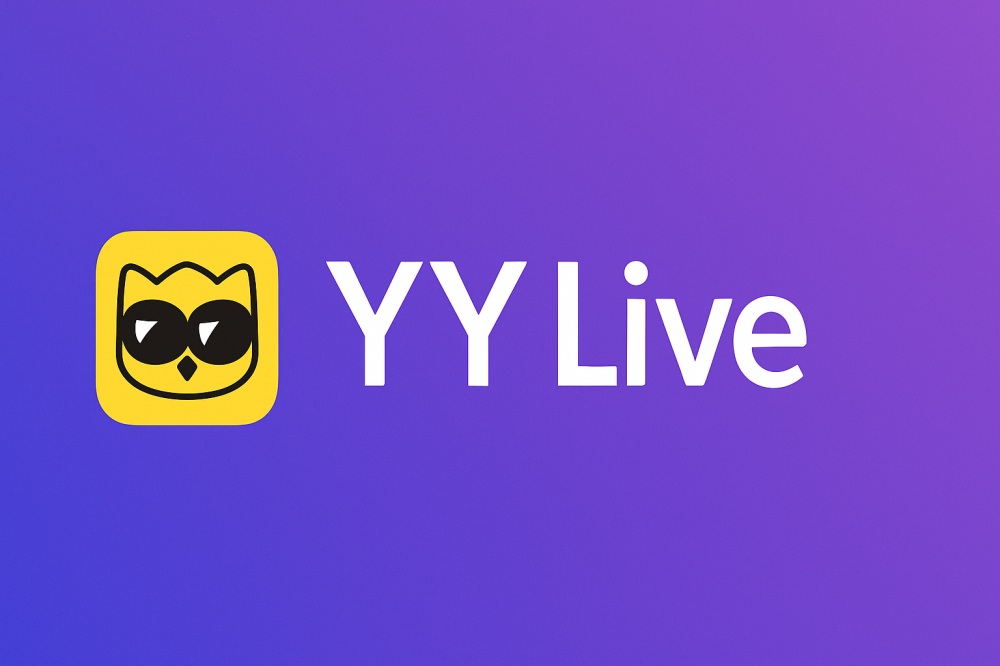
Ling’er, the AI live assistant launched by YY Live, is one of the most successful examples of this scenario. Currently, it is used in over 6,000 live broadcast rooms and serves more than 1 million users daily. Ling’er can recommend customized chat topics to hosts, greatly increasing engagement, while also helping hosts and users quickly establish connections and find common ground.
The results are remarkable: live broadcast rooms using Ling’er have seen interactive device usage increase by up to 670% and paying users rise by 80%. This not only improves interaction efficiency and host productivity but also reduces the labor costs of live broadcast assistants for guilds.
Parallel Live
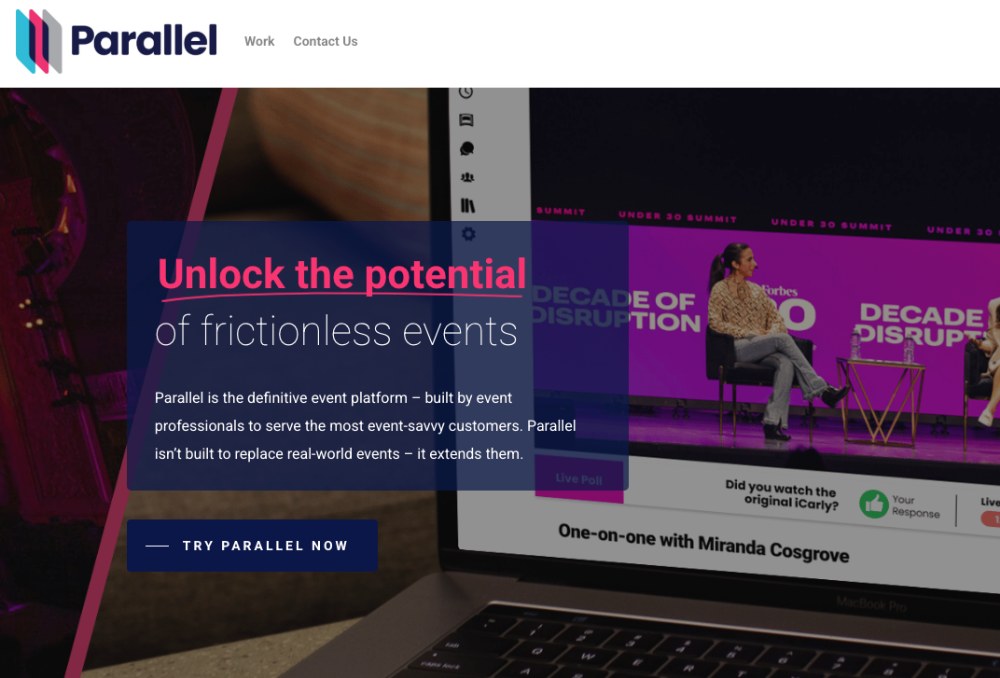
Parallel Live has pushed this scenario even further. As a simulation entertainment application, it generates entire audiences as AI-driven virtual characters rather than real people. After registration, users can become hosts and interact with these AI-generated audiences, receiving likes, comments, and messages from virtual fans.
The experience is highly immersive. Hosts can even use Parallel Live’s recording function to capture highlights of their virtual broadcasts and share them, extending the appeal of being a “virtual celebrity.”
Conclusion
From “being capable of recognition” to “recognizing quickly, accurately, and cost-effectively”, ZEGOCLOUD’s real-time Cloud Automatic Speech Recognition service is not only a technical tool, but also a “powerful weapon” that helps enterprises reduce costs, improve efficiency, and enhance user experience. Whether it is meetings that need to break language barriers or live broadcasts that want to improve interaction, it can be implemented quickly. Click here to experience it now and get free trial hours, making real-time voice processing simple and efficient from now on.
FAQ
Q1. What is Cloud Automatic Speech Recognition (ASR)?
Cloud ASR is a cloud-based service that converts spoken language into text in real time. It leverages deep learning models to deliver accurate and efficient speech-to-text results.
Q2. How does Cloud ASR work?
It captures audio, detects speech activity, processes it through trained recognition models, and outputs text with features like noise filtering, punctuation, and context-aware transcription.
Q3. What are the common use cases for Cloud ASR?
- Online meetings and instant subtitles
- Customer service and call centers
- Live streaming captions
- Language learning apps
- Voice-enabled virtual assistants and IVR systems
Q4. Can Cloud ASR handle noisy environments?
Yes. Modern solutions integrate noise reduction, voice activity detection (VAD), and echo cancellation to improve accuracy even in challenging environments.
Let’s Build APP Together
Start building with real-time video, voice & chat SDK for apps today!



